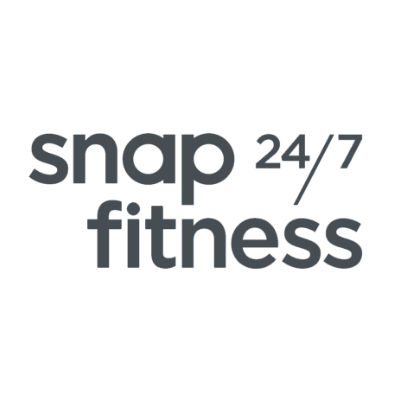4 Simple Tips to Boost your Fitness Business

What do the personal trainers who earn the most money or build the most cash-rich businesses have in common?
Surprisingly, it’s not always that they’re the best gym-floor personal trainers with the most extensive knowledge on exercise science.
It’s actually the fitness professionals who understand business as much as they understand muscle groups.
If you want to really succeed you need to be a shrewd businessperson, marketer and salesperson on top of a fitness expert.
This article will help build your business know-how and give you four powerful business-building strategies that aren’t your run-of-the-mill ‘post a selfie on instagram’ tips.
You'll not learn how to not only retain your existing clientele but also attract and convert potential clients.
Think of it as your secret weapon to supercharge referrals, create a buzz about your services, and ultimately, beef up your bank balance.
Understand your unique selling proposition (USP)
Every personal trainer knows the body's anatomy, from the flexors to the extensors. But ask them about their USP, and many draw a blank. Here's the truth: understanding your USP is as crucial as understanding the difference between aerobic and anaerobic exercises. Let's delve into why.
Why having a USP is paramount in the fitness industry
In an industry as crowded as fitness, merely being "good" doesn't cut it anymore. The gyms are teeming with good trainers. But clients aren't looking for good; they're searching for the best – someone who resonates with their goals, challenges, and aspirations. That's where your USP comes into play.
Your USP, or unique selling proposition, is that special sauce – your magic touch that no other trainer offers. It's what sets you apart, making clients choose you over the trainer flexing his credentials on the other side of the room.
Tips to identify and articulate your USP
Diving into the depths of your USP might seem daunting, but it's an introspective journey worth taking. Let's steer you in the right direction.
Crafting your personal trainer story
Your journey into fitness isn't just a timeline of certifications and gym sessions. It's a story – filled with ups, downs, challenges overcome, and milestones achieved. This story is a goldmine.
Start by reflecting: why did you choose this path? Was it a personal transformation that sparked your fitness journey? Or perhaps a deep-rooted desire to make a difference in people's lives? Document your journey, highlight the moments that defined you, and share it. Clients connect with stories, not just credentials.
Differentiating yourself in a saturated market
The fitness world is a vast ocean, and if you're not careful, it's easy to get lost in its waves. To stand out, you need to identify what you bring to the table that others don't.
Perhaps you have a knack for making workouts fun, turning sessions into mini parties. Maybe you specialise in postnatal fitness, helping new mums regain their confidence. Or you might have overcome a significant injury and now specialise in rehab training.
Whatever it is, embrace it, own it, and shout it from the rooftops (or, you know, just your social media profiles and website). When clients see you as the expert in what they need, they won't look elsewhere.
Remember, in a world of generalists, being a specialist can be your ticket to success. Your USP is the beacon that draws clients to you, and once you've nailed it, you'll wonder how you ever went without it.
Master the art of networking
When you're knee-deep in squat racks and kettlebells, the last thing on your mind might be schmoozing at a networking event. But here's the thing: as a personal trainer, networking isn't just a 'nice to have'. It's an absolute necessity. It's the lifeblood that can propel your business to dizzying heights, helping you tap into opportunities you didn't even know existed.
Why networking is the lifeblood of a personal training business
The fitness world is expansive, diverse, and ever-evolving. Staying isolated in your corner, no matter how talented you are, can stifle your growth. Networking introduces you to a world beyond the confines of your gym: a world teeming with potential clients, business opportunities, and valuable partnerships.
More importantly, the fitness industry thrives on trust. People entrust their health, body, and sometimes, their deepest insecurities to a trainer. This trust often flows through word-of-mouth. A solid recommendation from a fellow professional or a satisfied client is worth its weight in gold.
Smart networking strategies for fitness professionals
To unlock the full potential of networking, you've got to be strategic. It's not just about shaking hands and collecting business cards; it's about building genuine, mutually beneficial relationships.
Partnering with local businesses for referral programs
This is one of those strategies that's often overlooked, but it's pure gold. Think about it: there's a wealth of local businesses whose clientele overlaps with yours. The health food store down the road? The physiotherapy clinic in the next building? These are places filled with potential clients.
Initiate partnerships. Perhaps you can offer a discount for their customers, or they could give a special deal for your clients. It's a win-win. Not only does this drive new clients to your doorstep, but it also strengthens community bonds.
Attending industry events and seminars
Yes, these events can be a tad overwhelming, especially if you're a newbie. But they're an invaluable resource. They're the places where you can brush shoulders with industry veterans, discover the latest trends, and even get a peek into upcoming innovations in the fitness world.
But don't just be a passive attendee. Engage, ask questions, participate in discussions. Remember that business card you collected? Follow up. Send a friendly email or even a good old-fashioned thank you note. Let them know you value the connection, and you're keen to explore how you both can benefit.
In a nutshell, networking is your secret weapon. It's what can take you from being 'just another trainer' to being 'THE trainer' everyone's talking about. So, dust off those business cards, put on your best smile, and dive into the vibrant world of fitness networking. You'll be amazed at the doors it opens.
Elevate your client experience
You've got the skills. You've mastered the art of the deadlift and the science behind improving cardiovascular health through exercise. But, in the bustling world of personal training, that's only half the battle. The other half? Delivering a client experience so stellar, they can't help but rave about you. Let's dive deep into how you can take the client experience from 'good' to 'absolutely unforgettable'.
The significance of word-of-mouth in the PT industry
Let's start with a simple truth: in the personal training industry, word-of-mouth isn't just important; it's paramount. You see, the world of fitness is intimate. Clients share their goals, their insecurities, and often, their personal stories. When they find a trainer who genuinely understands and supports them, they talk. They share their success stories, the amazing workouts, and yes, even the hilarious workout bloopers.
In this digital age, while a well-placed ad can get you attention, a heartfelt recommendation from a trusted friend is what seals the deal. It brings credibility, authenticity, and a promise of a quality experience.
How to exceed client expectations every single session
Meeting client expectations is standard. But, in the realm of personal training, the gold standard is exceeding them. Every. Single. Time.
Personalising workout plans for individual client needs
No two clients are the same. John might be training for a marathon, while Sarah is looking to regain her strength post-pregnancy. Recognising these unique needs and crafting bespoke workout plans is your ticket to delivering value.
It's not just about changing exercises; it's about understanding the 'why' behind a client's goals. Dive deep. Ask questions. And then create a plan that isn't just efficient but is also enjoyable and tailored to them.
Seeking regular feedback and adapting accordingly
Here's where many trainers slip up: they forget the art of listening. As experts, it's easy to fall into the trap of assuming we know best. But the beauty of personal training lies in its two-way street.
Regularly ask your clients for feedback. How are they finding the workouts? Is there something they'd like to focus on more? Any exercises they particularly enjoy or despise? This feedback isn't just valuable; it's gold. It helps you refine your methods, ensuring you're always aligned with your client's evolving needs.
In essence, elevating the client experience is about understanding, personalisation, and constant adaptation. It's about seeing your client not as a 'job' but as a partner in a beautiful fitness journey. When you put in that extra effort, when you show you genuinely care, you're not just gaining a loyal client; you're gaining a passionate ambassador for your brand. And in the world of personal training, there's nothing more valuable than that.
Diversify your income streams
Stepping into the role of a personal trainer, you quickly realise it's not just about counting reps or pushing clients to break a sweat. It's also about ensuring you've got a steady income flowing in, even on days when the gym is quieter than usual. In an industry known for its peaks and troughs, diversifying your income streams isn't just clever – it's essential.
The reality of income instability in personal training
Most trainers have felt it – that unsettling lull during holiday seasons or the unpredictability that comes with a sudden change in the economic climate. Relying solely on one-on-one sessions can be a financial rollercoaster. The key to navigating this instability? Think broader. Think bigger. Think beyond the gym.
Ways to branch out and monetise your expertise
You've spent years honing your craft, acquiring knowledge, and understanding the intricate dance between mind, body, and spirit in the realm of fitness. Why limit yourself to the four walls of your training facility?
Launching online fitness courses or programs
The digital age has been a boon for personal trainers. There's a world out there – hungry for fitness advice, workouts, and plans – that you can cater to. By launching online courses or fitness programs, you not only reach a wider audience but also create a passive income stream. The initial effort in setting it up might seem daunting, but the rewards, both in terms of finance and influence, can be substantial.
Selling fitness merchandise or nutritional supplements
Your clients trust you. They look up to you for guidance, not just on workouts, but on their overall wellness journey. Why not extend this trust to fitness merchandise or nutritional supplements? Whether it's branded workout gear, resistance bands, or quality supplements that you believe in, offering products can be both a service to your clientele and a boost to your income.
Conclusion
The fitness industry, in all its vibrant dynamism, offers immense opportunities for those willing to constantly evolve and adapt. But, here's the catch—it's not enough to be a master at your craft. To truly thrive, you must wear multiple hats: the dedicated trainer, the savvy businessperson, the attentive listener, and the innovative entrepreneur.
By harnessing your unique selling proposition, forging meaningful connections, elevating each client's experience, and cleverly diversifying your income streams, you set the stage for not just surviving in the personal training landscape, but truly flourishing.


























